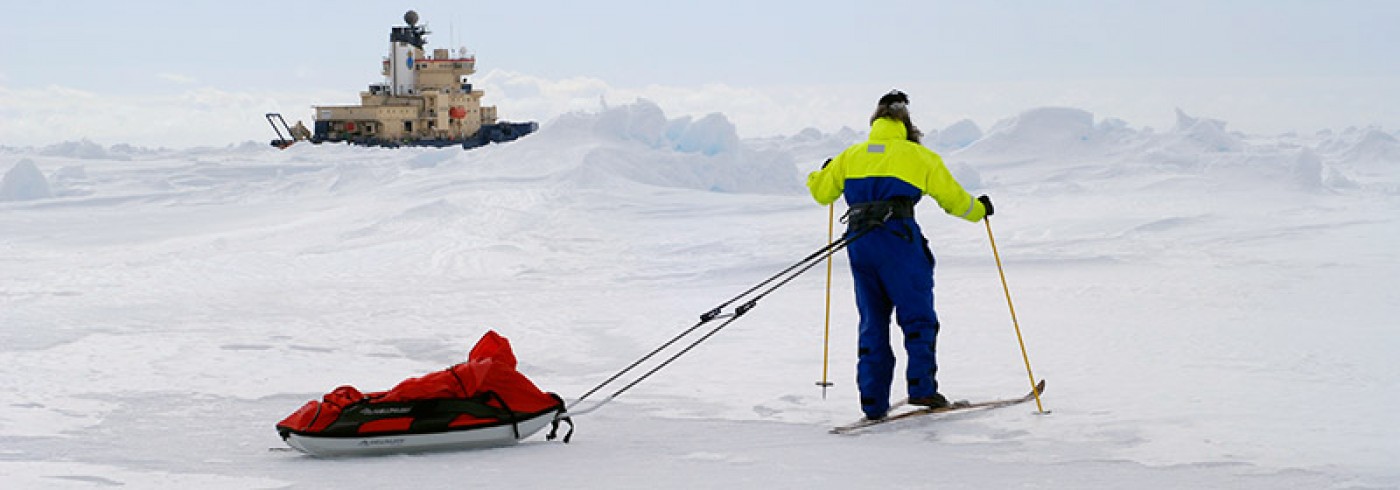Investigating the source of iron and other trace nutrients in the Amundsen Sea Polynya
26 November 2010 - 17 January 2011
Nathaniel B. Palmer docked on ice during a short break from sampling in the Amundsen Sea. Photo: Julie Dinasquet
The Amundsen Sea, located off West Antarctica between the Antarctic Peninsula and the Ross Sea, is home to one of the twenty-some polynyas that occur every summer in the shelf waters surrounding the Antarctic continent. Polynyas are regions of seasonally open water surrounded by sea ice. Often hundreds of miles wide, polynyas are nutrient-rich “oases” that offer refuge for animals big and small. Based on remote sensing, the Amundsen Polynya has the highest biological productivity of all Antarctic polynyas.
The aim of this project within the ASPIRE project was to investigate the source of iron and other trace nutrients that fuel the high biological productivity of the Amundsen Sea Polynya.
Because the Amundsen Sea is bordered by waters with very little biological productivity due to a lack of the micronutrient iron, the Amundsen Sea Polynya’s high biological productivity is therefore likely a result of natural iron fertilization. One goal of this expedition was therefore to locate the primary sources of bioavailable iron and to understand how it gets to the polynya’s surface waters. Possible sources of iron include atmospheric deposition and glacier and iceberg melting.

Maria Lagerström working on iron analysis in sea water in the “bubble” on board the Nathaniel B. Palmer. Photo: Kuria Ndungu.
We collected seawater using a specialized sampling rosette fitted with trace-metal-clean bottles. We also made iron measurements of the water inside a custom-prepared filtered air lab or “bubble” aboard the ship. Our preliminary results suggest substantial iron inputs at stations near ice shelves. We hypothesize that this iron is probably associated with glacial meltwater, possibly due to interaction with the warm Antarctic Circumpolar Current (ACC) water. Our hypothesis is based on recent evidence of increased delivery of warm water from the ACC, and the flow rate of the Thwaites and Pine Island glaciers, both of which terminate in ice shelves influencing the Amundsen Polynya.
We have presented some of these preliminary findings at an international scientific meeting and will publish our final findings in international peer-reviewed scientific journals.







